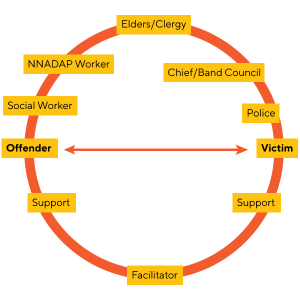Justice Sinclair Transcript
Associate Chief Judge Murray Sinclair delivered a presentation at the Elders-Policy Makers-Academics-Constituency Group Meeting held in Alymer, Quebec on April 16-18, 1997.
“We have a lot of ground to cover, all of us, in a very short period of time. We only have one lifetime each and we have much to do when it comes to dealing with Aboriginal people and justice issues. I am not sure that one lifetime is enough to do all that needs to be done.
So let us begin with the understanding that we cannot do all of the things that need to be done in the short time we have together. We can only do so much with what we have been given and we can only go so far within the time that we are here together.
As always, I’m a bit perplexed about how I can contribute to the conversation when invited to gatherings like this because I’m never certain what it is that each of you knows, nor am I certain of what each of you do or want to do and how I can help with whatever you’ve come here for.
So, perhaps, some of you have already heard some of the things I’m going to talk about; however there are many of you here who I have not previously met and those people have not yet had a chance to hear some of the views that I have on the issues that Aboriginal people face in the Aboriginal justice system. You have also not had an opportunity to hear, perhaps, some of my thoughts about where it is we should be going…”
